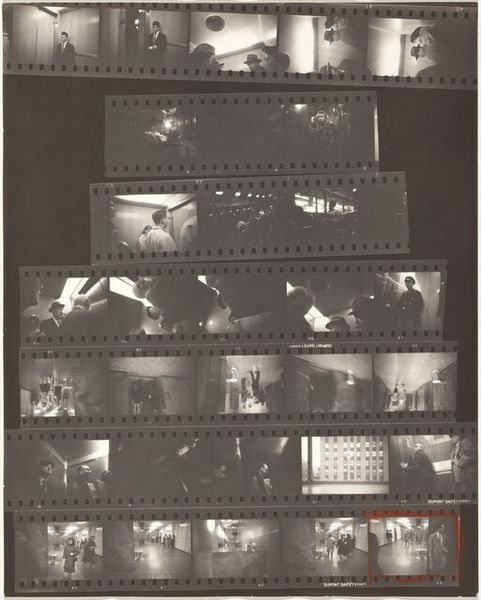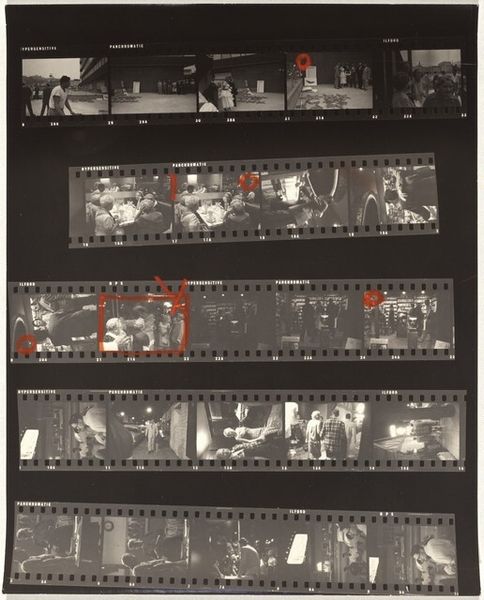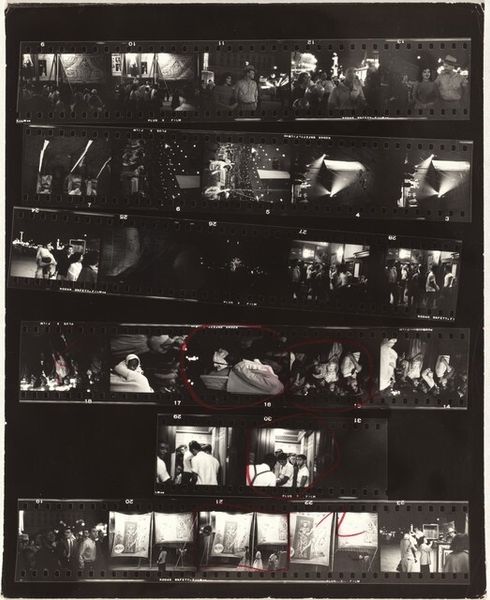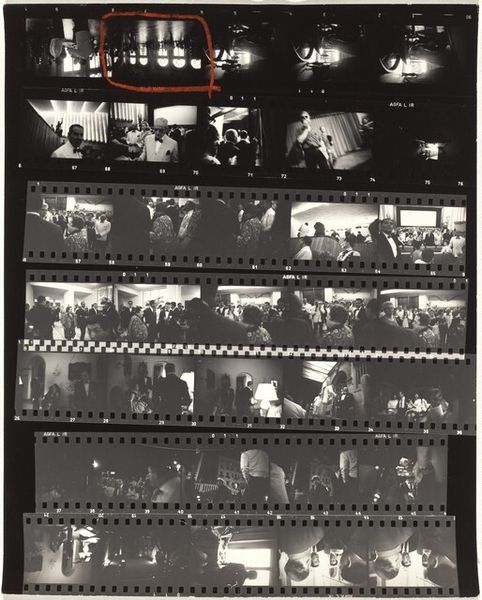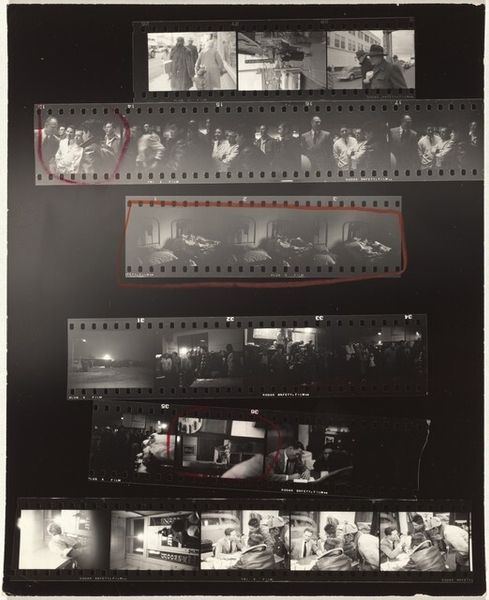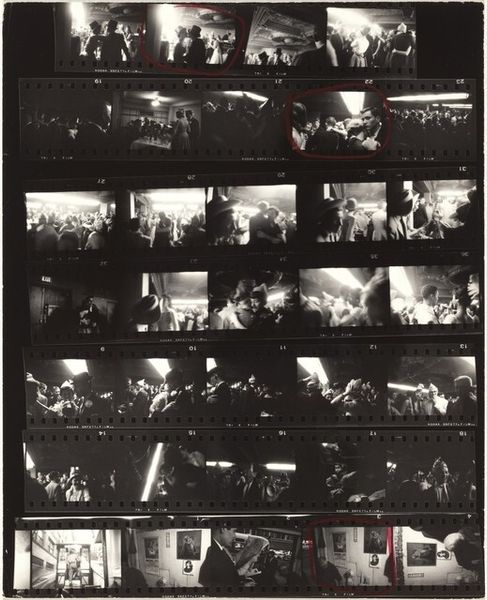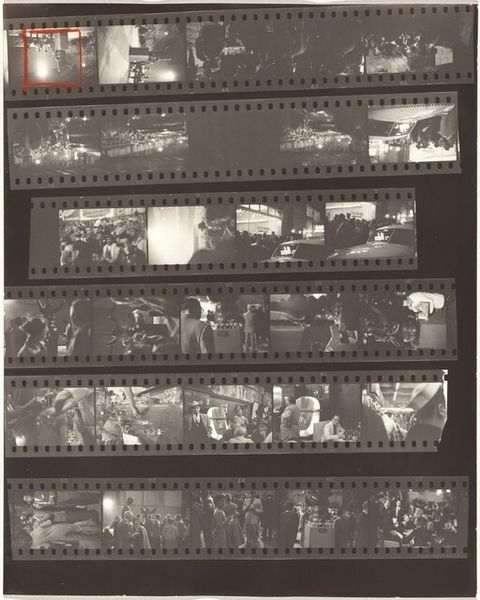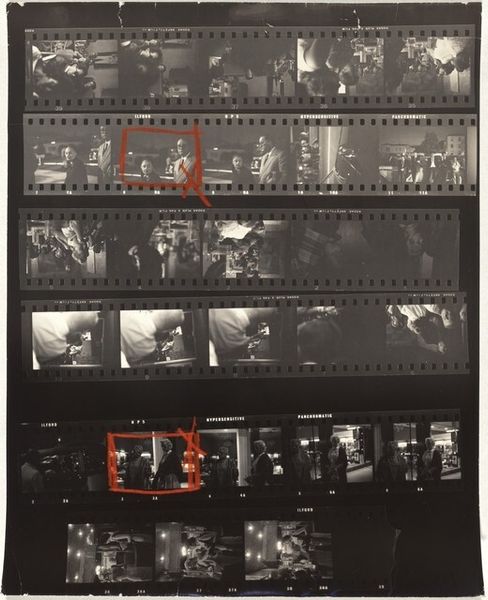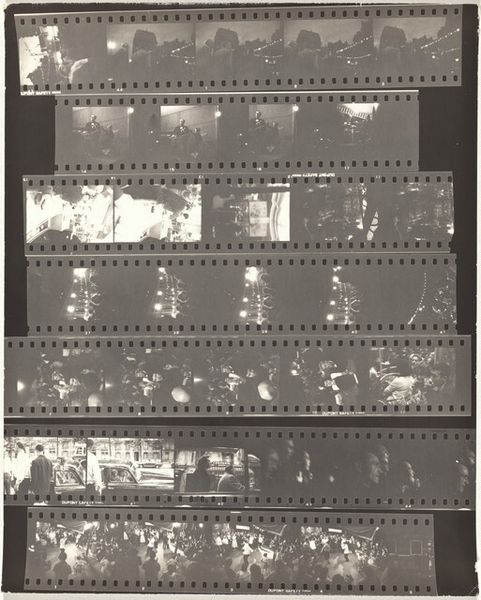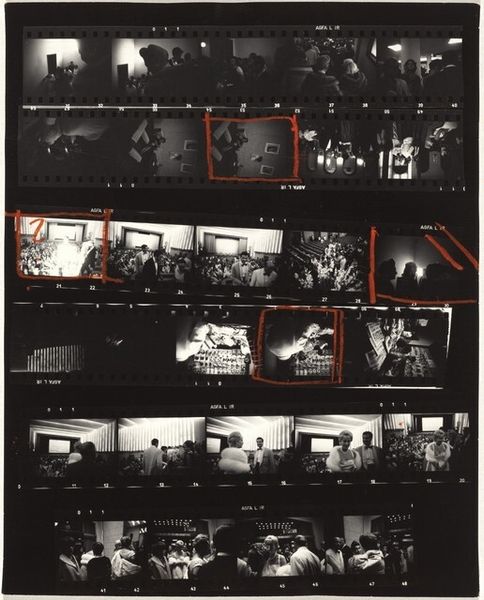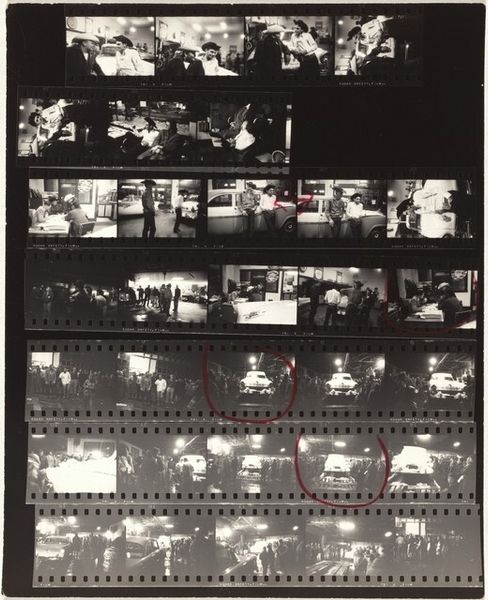
print, photography, gelatin-silver-print
#
portrait
#
film photography
#
wedding photograph
# print
#
wedding photography
#
ceremony
#
street-photography
#
photography
#
culture event photography
#
gelatin-silver-print
Dimensions: overall: 25.2 x 20.2 cm (9 15/16 x 7 15/16 in.)
Copyright: National Gallery of Art: CC0 1.0
Editor: This is "Venice, Italy 28", a gelatin silver print from 1964 by Robert Frank. Seeing all the frames together like this, with different exposures and events, it feels almost like flipping through someone's memories. What strikes you most when you look at it? Curator: What grabs me immediately is the act of framing, both within the photographs themselves and in the larger presentation of the contact sheet. This isn't just about capturing an event, like a wedding perhaps, but about the decision-making process of what gets shown and how it gets shown. How does the display of the images change our understanding of the depicted ceremony? Editor: That's a good question. I hadn’t considered the politics of the selection itself. Are you saying Frank is showing us his power to decide what's important? Curator: It's not necessarily about power, but about pointing out the subjective nature of photography. By revealing the editing process, he challenges the supposed objectivity of documentary photography. We, as viewers, become aware of the mediation between the event and our perception of it. Do you think this presentation enhances or detracts from the emotional impact of the individual images? Editor: I think it enhances it because it adds a layer of reality. It is raw, like a sketchbook, where every shot isn't perfect, and choices are on display. This approach also seems more intimate and personal than a pristine finished product. Curator: Exactly. And that intimacy speaks to a larger shift in the post-war era, a desire to break down established norms and explore more subjective, personal narratives. It suggests also an emerging tension between public and private, a concept artists are always interrogating. Editor: So, understanding the context of the art world helps to understand the photo on a deeper level. This makes me wonder about the story behind it, like who are those individuals present there. Curator: Agreed, it could also make us more attentive viewers by prompting us to consider who controls how narratives are created.
Comments
No comments
Be the first to comment and join the conversation on the ultimate creative platform.
